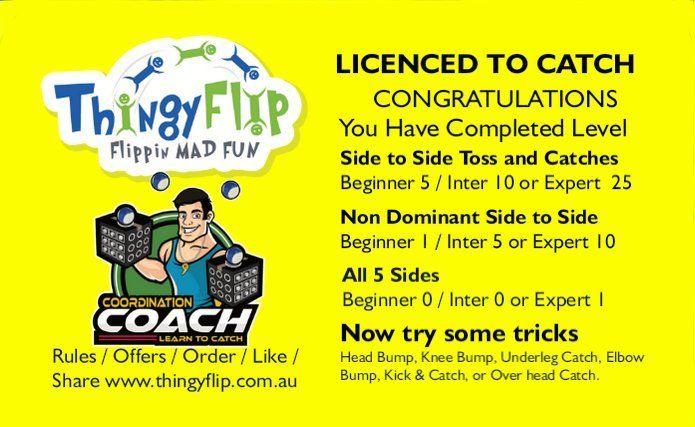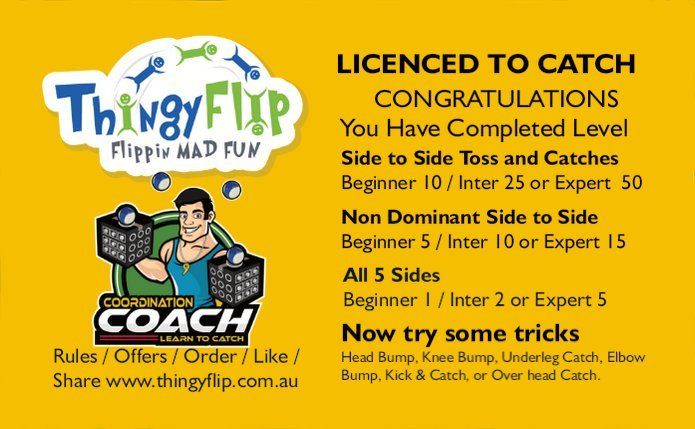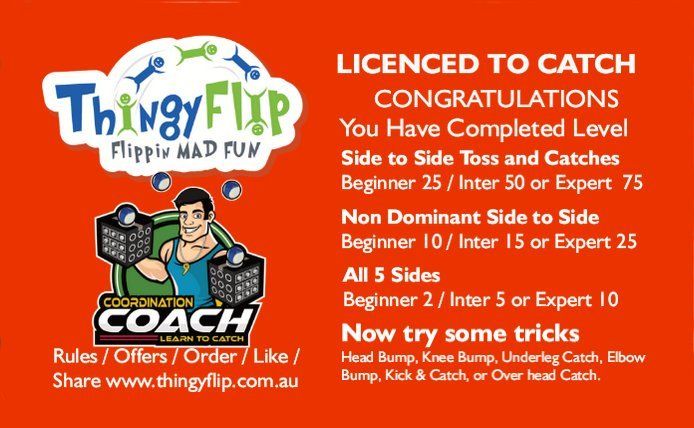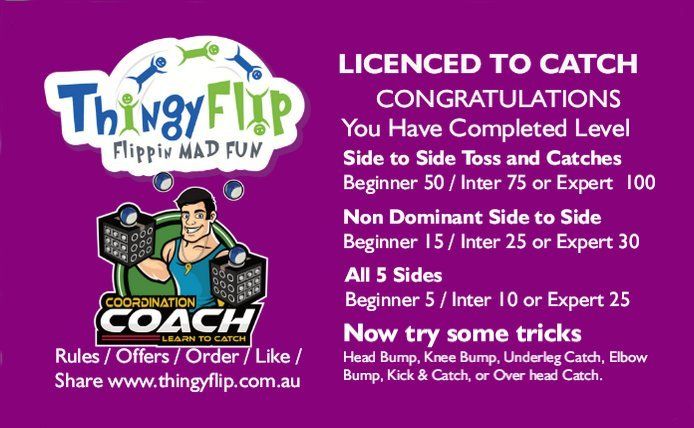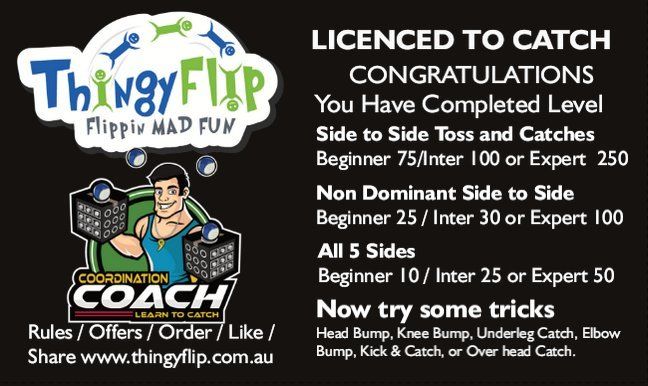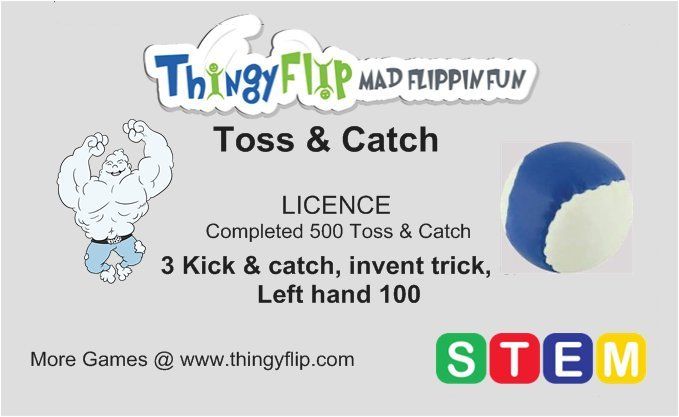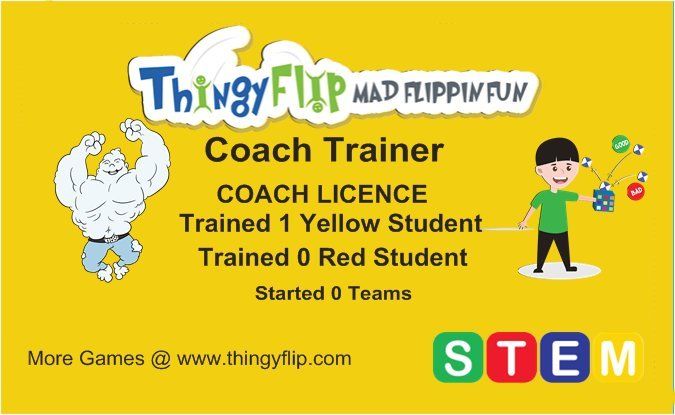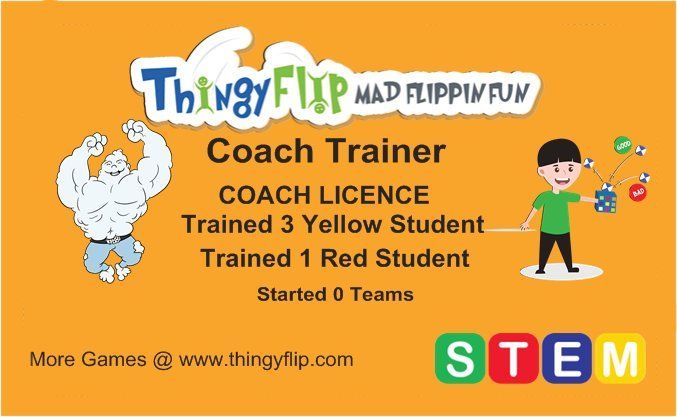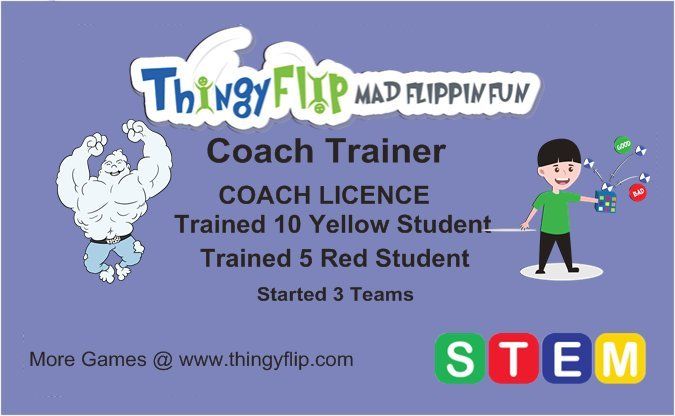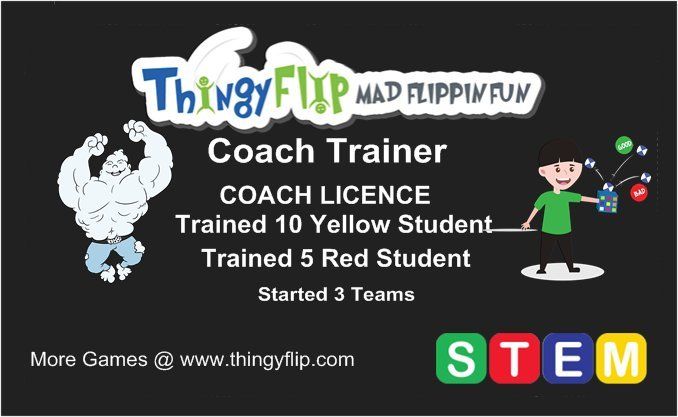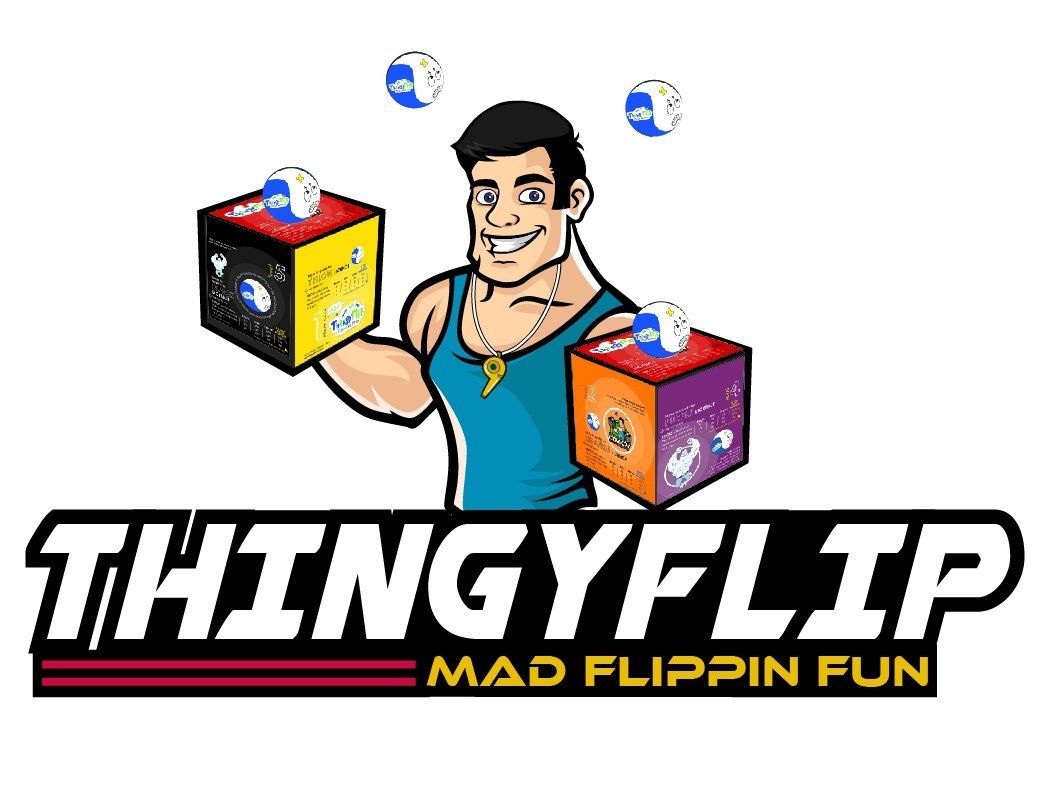Hand Eye Coordination Licencing System
A way to record children’s and young people's Motor Skills Development!
The Thingy Flip is the first Hand-Eye Coordination Grading (HECG) system. Check out our grading system (we call them Licences) which is fun and rewarding for the kids, but is also a way to monitor their progress and development.
The Thingy Flip is the first Hand-Eye Coordination Grading (HECG) system. Check out our grading system (we call them Licences) which is fun and rewarding for the kids, but is also a way to monitor their progress and development.
It is of course important that children learn the essential skills of literacy and numeracy at school which is already heavily tested and graded throughout their school years. We can see how important this aspect of development already is in the education system here: https://education.nsw.gov.au/news/latest-news/biggest-education-shake-up-in-30-years
However, what about their hand-eye coordination and motor skills? Sure, some kids might be considered good at sports and others not so much. Some scores are recorded for their athletic achievements, if they participate. But, imagine if it was considered an integral and normal part of the curriculum? We think this is so important! We discuss brain development and its connection to motor skills and learning later. It is all linked, and this is part of the reason Thingy Flip was invented. We want to bridge that gap so that kids start participating more in physical learning and take some time off the devices.
During around the first three years of life, children are very much right-brain dominant, as has also been linked to attachment theory and why they seem largely governed by emotions 1. The right-sided brain function is very much around emotional, intuitive experience and perception. It is thought that around ages 4 - 7, things shift and the left side becomes more involved 1. The left hemisphere is linked to logic and reasoning.
Not all children develop the same of course and not all will display the noticeable change from the predominant right hemisphere learning styles to the left at each age. Those children who function more from the right brain may find it harder to concentrate and pay attention to details. They are often more creative, impulsive and abstract in their thinking.
The left hemisphere of the brain is in charge of the right side of the body. The right hemisphere of the brain, the left side of the body. However, studies suggest that both sides of the brain (and the corresponding side of the body) contribute unique mechanisms that assist motor function and learning 2. It seems both sides are required for different but complementary functions 2.
This is one of the reasons why we feel it is important to get kids using both sides of their brains by practising and learning new skills through motor actions such as catching and throwing with the Thingy Flip. It seems currently, the predominant tasks kids have to face are using their devices (phones, tablets, gaming consoles or laptops) at school and at home. We feel it is important that they also get back to doing a lot more physical playing which will challenge their hand-eye (brain) coordination too.
Not all children develop the same of course and not all will display the noticeable change from the predominant right hemisphere learning styles to the left at each age. Those children who function more from the right brain may find it harder to concentrate and pay attention to details. They are often more creative, impulsive and abstract in their thinking.
The left hemisphere of the brain is in charge of the right side of the body. The right hemisphere of the brain, the left side of the body. However, studies suggest that both sides of the brain (and the corresponding side of the body) contribute unique mechanisms that assist motor function and learning 2. It seems both sides are required for different but complementary functions 2.
This is one of the reasons why we feel it is important to get kids using both sides of their brains by practising and learning new skills through motor actions such as catching and throwing with the Thingy Flip. It seems currently, the predominant tasks kids have to face are using their devices (phones, tablets, gaming consoles or laptops) at school and at home. We feel it is important that they also get back to doing a lot more physical playing which will challenge their hand-eye (brain) coordination too.
Click each Licence below for details.
References
3 Schore A.N., 2000, “Attachment and the regulation of the right brain”. Attachment and Human Development. 2000;2(1):23-47. doi:10.1080/146167300361309
4 Mutha, P. K., Haaland, K. Y., & Sainburg, R. L. , 2012. “The effects of brain lateralization on motor control and adaptation”. Journal of motor behavior, 44(6), 455–469. https://doi.org/10.1080/00222895.2012.747482
Get Your Thingy Flip Licence
Currently, our education system doesn't have a system to determine the hand-eye coordination skills of students when it comes to tossing and catching. Well, apart from telling the kids 'Boy that was a good catch'. The Thingy Flip is here to change that. We want a concrete and measurable way to know when kids (and adults!) are improving these vital skills.
Want to know why these skills are so important and influence our brain function? Read more about it and why we are so passionate about this in Our Story.
The Thingy Flip is designed to be able to grade anyone's tossing and catching skills, from kids to adults. Not only does it grade your skills it also trains your eye hand coordination to a higher degree than ever by giving you 10 extra sides to toss and catch on 5 on your right hand 5 on your left hand.
Tips for Tossing and Catching.
- When learning, keep your tosses low.
- The higher you toss, the harder it it to catch.
- When catching, bring the box down trying to match the speed of the sack. This makes the sack not bounce and makes landing easy. This trains kids to have whats known as SOFT HANDS which are very important for games like cricket and baseball.
FLIPPIN TOSS & CATCH LICENCE AGE ( 0-80 )
This Yellow licence is for kids and is awarded once a child completes the Toss & Catches using the sack system. See a licence award below.
This Orange licence is for kids and is awarded once a child completes The Toss & Catches & non-dominant catches using the sack system.
This Purple licence is for kids and is awarded once a child completes the Toss & Catches & non-dominant catches using the sack system.
This Black licence is for kids and is awarded once a child completes the Toss & Catches & non-dominant catches using the sack system.
Once you reach Black you can go for your Coach Trainers Licence.

